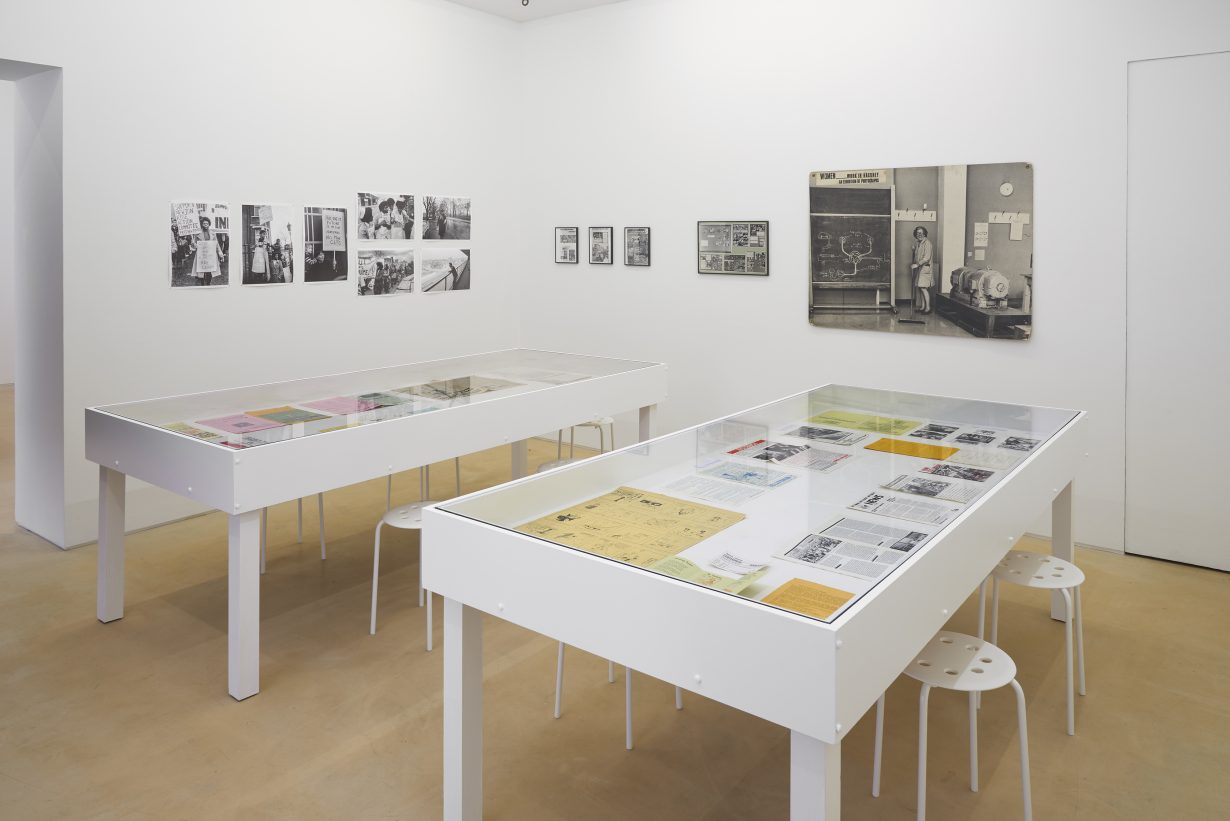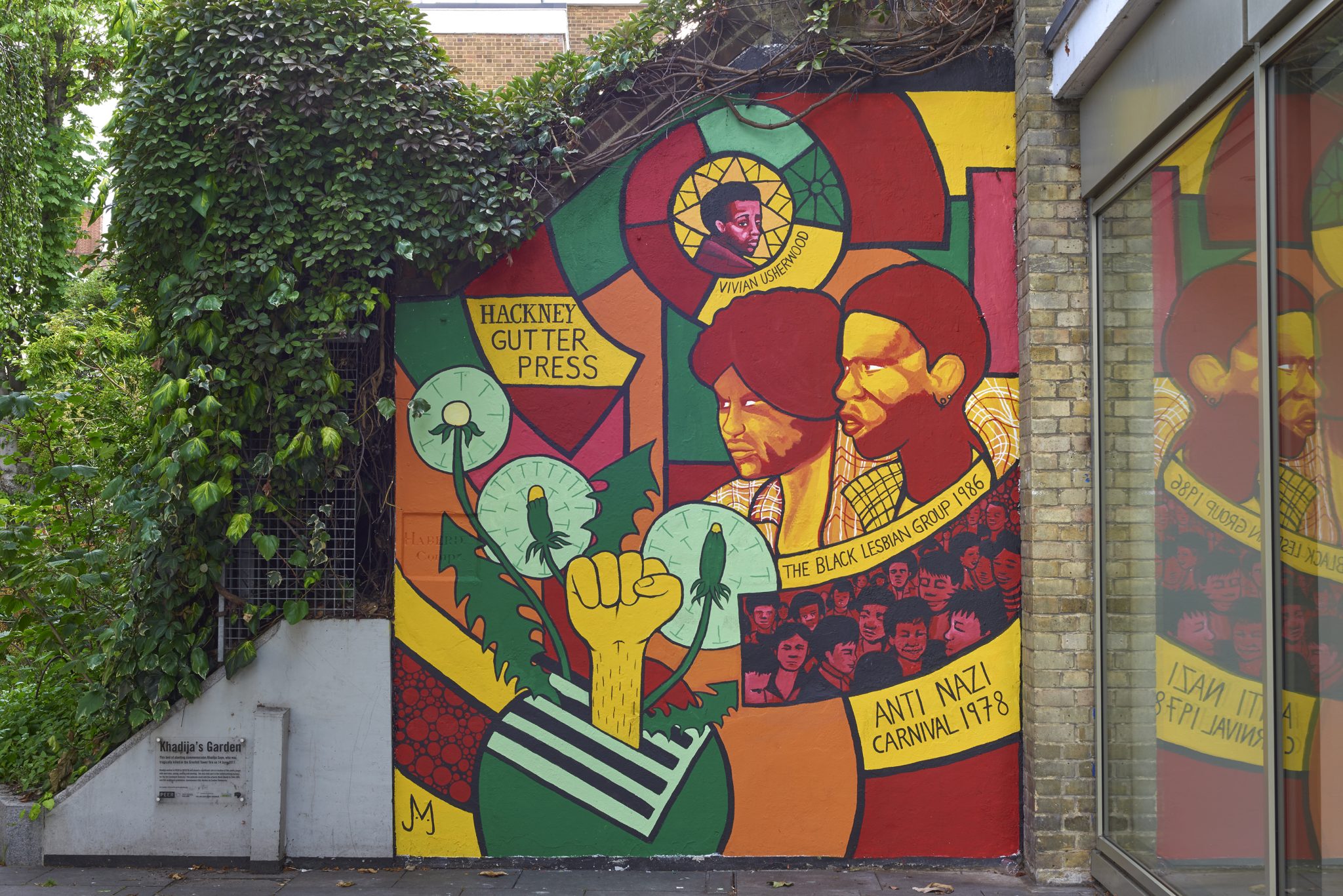A recent history of political activism and collective action in the now-gentrified London borough of Hackney is chronicled in an exhibition that reflects on how art and politics in the UK have drifted apart
On 20 November 1975, documentary photographer Neil Martinson wrote to Jo Spence and members of the Hackney Flashers, a feminist and socialist collective of photographers, about plans to reproduce images made by himself and the group on postcards. In principle, Martinson had no objection to the proposal, as long as the images were sold cheaply and made widely available. What must be maintained, he insisted, was a link between the political project of Hackney Flashers and its artistic output: ‘An image by itself cannot convey a message’.
Ostensibly, we are a group of people composed of who we are showcases artefacts produced by activists and artists working in and around the London borough of Hackney during the 1970s and 80s who share Martinson’s vision. It’s an attitude still espoused by many on the left today for whom political art must convey a moral message. But the period covered here (1971–86) was very different to our own. Unlike activists today, the Hackney Flashers (whose correspondence with Martinson and others is on display) weren’t doing politics in a period of widespread political disengagement: in the heady days between the administrations of Edward Heath and Margaret Thatcher, class struggle was alive and well, and antiracism was an attempt to defend the claim of former citizens of an empire in decline to the right to belong in a country whose history they had helped to forge.
The year 1971 marks the founding of Centerprise, the cooperatively run Hackney bookshop and community centre out of which much of the material on show here emerged, while 1986 saw the abolition of the Greater London Council, a political and administrative body that had provided funding for London-based artists. Centerprise closed in 2012. The archival material, documentary film and painting assembled in we are a group… opens onto a world in which, for a brief period at least, a serious attempt was made to overcome the tensions that continue to define culture and politics in Britain: the divisions between producers and consumers of culture, and the participants and objects of politics. At Centerprise, books published by photographer Ingrid Pollard could be found alongside posters created by the Hackney Campaign for Nuclear Disarmament, both on display in the show. These materials are brought to life by the short documentary film Somewhere in Hackney (1980), directed by Ron Orders, which shows packed rooms of people discussing politics in the community centre. In one scene, a young woman says that, were it not for the centre, she would never have known about publications like Spare Rib, the feminist magazine that ran from 1972 to 1993.

These works and materials are displayed alongside two acrylic-on-wood paintings completed in 1975 by Dan Jones, an antiracist campaigner and artist. Prior to being shown here, they’d been hanging on the kitchen wall of the Cable Street house where Jones, now eighty-three, lives with his family. In their flatness and posterlike quality, they resemble the work of Lubaina Himid, another now-well-known artist involved in the black arts movement of the 1980s. As with Himid’s paintings, the lack of depth in Jones’s works makes the figures on display entirely outward facing. What the viewer is forced to confront in these paintings is a vision of a cosmopolitan East End in which throngs of people from different racial backgrounds of all ages march through the street, passing fascist graffiti and holding antiracist banners. Viewed today, the sentiment of these images is easy to incorporate into the hegemonic language of diversity and inclusion. But in the context of the letters and posters displayed, they give the visitor a sense of real political stakes of defending multiculturalism in an England in which these ideas had not yet won out.
The average house price in Hackney is now £650,000, over twice the national figure. Rising rents have driven many middle- and working-class people out of the borough, but a large stock of council-built housing, the majority of which is still occupied by social housing tenants, has ensured a continuity between the Hackney of the Centerprise era and the heavily gentrified area of today. Superficially, an art gallery like Peer, flanked on all sides by public housing, exists on a fault line in debates around the role of the culture industry in driving gentrification. The show responds to these discussions by showing that art, rather than representing the interests of the wealthy, is capable of chronicling social change, providing the viewer with a way of comparing the East London of the 1970s and 80s with the area today and asking what has been lost.
One of the new works commissioned for the show is a large mural by Jacob V Joyce, a political activist and artist, which decorates an outdoor wall adjacent to the glass frontage of the gallery. Among its images are Vivian Usherwood, a child poet who briefly became famous after having his verses published by Centerpise; the logo for Hackney Gutter Press, a now defunct radical newspaper; and part of a poster for the Black Lesbian Group, a feminist collective active around the borough.
Peer’s director, Ellen Greig, speaking ahead of the show’s opening, explained how common it was for people to stop and look at the mural, and to share their memories of Centerprise with her. Inevitably, these recollections turn to how much the borough has changed in recent times, signalling the defeat of a project that attempted to offer a challenge from below to Britain’s closed and culturally homogeneous cultural sphere. The show’s chief intervention is to suggest that with the political defeat of the left during the 1970s and 80s came also the defeat of a model of art guided by a notion of democracy that valued the right of citizens to creative self-expression, and accepted the mixed results that this would produce.
we are a group of people composed of who we are at Peer, London, through 9 September
